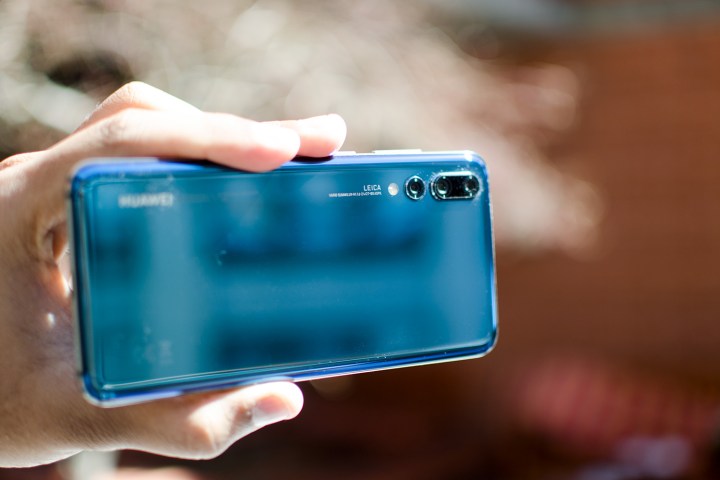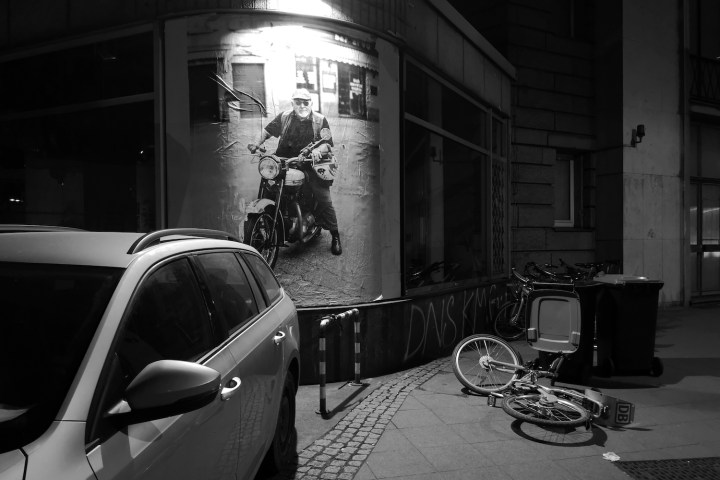
Black-and-white photographs have a very distinctive style, and can add a completely different look or considerable visual drama to an everyday scene, as well as help unclutter busy scenes and focus attention. Once you start experimenting with black-and-white photos, it’s easy to get addicted.
The Huawei P20 Pro, along with the Mate 10 Pro, the Huawei P10, and the Huawei P9, have a dedicated monochrome lens in the camera setup. Co-engineered by Leica, it produces glorious, true black-and-white photos. They are the only smartphones to offer this feature, but a black-and-white filter can be added to photos during or after taking them on most other phones.
What can you do with your monochrome pictures to make them look even more striking? We received some great tips from photographer Bobby Anwar on exactly this topic, using the P20 Pro. In particular, he showed us a technique that can make your monochrome shots even more striking, using both visual techniques while taking the shot, as well as some clever editing afterwards.
Anwar demonstrated these tips on the P20 Pro, but if you don’t have this or any other Huawei phone with a monochrome lens, you can achieve similar effects on any other device with an aforementioned filter.
Find your monochrome mode
Before taking black-and-white photos, you need to find the right mode. On the Huawei P20 Pro, open the camera app and swipe left on the mode selector above the shutter release until you find More. Tap this, and look for the Monochrome setting.
On the Apple iPhone, open the camera app and then tap the Filters option in the top right while in portrait orientation. A selection of filters appears above the shutter release. Scroll through them until you reach Mono, which re-creates a monochrome look.
If your phone doesn’t have Live Filters — where the filter effect is shown as you take the photo — try a third-party camera app, such as VSCO, Camera+, or even Instagram’s own camera feature. Alternatively, take the photo in color, and then alter the look using an editing app. We like Snapseed, a Google app, which we’ll also use later on for editing.
Taking your photo
Anwar is a monochrome photo advocate, so he uses a very specific technique for making some of his black=and-white photos look incredible. First, you’ve got to go out and find your subject. We shot a combination of street scenes, landscapes, portraits, and night shots. This technique really works well at night, with stark lighting.
If you’ve lined up your shot against a bright background, reduce the exposure value (EV) a little more, effectively darkening the shot. On the Huawei P20 Pro, this is done by tapping and dragging the little sun icon down, when it appears next to the area on which the camera is focused. On the iPhone, use the same method. On the Pixel 2 and the Samsung Galaxy S9, the EV slider appears at the bottom of the viewfinder.
Don’t worry if your photo looks dark, we’re going to fix that. Additionally, we recommend taking several photos with different EV values. It’s not always certain how the editing will go, and different photos will react differently. Plus, if it doesn’t work out for your shot, you won’t have missed the opportunity for a photo with an automatic exposure value.
To the editing suite
Now it’s time to craft your final image, and to do this you’ll need a photo-editing app. We’re going to explain how it’s done on the Huawei P20 Pro, which includes an excellent photo-editing suite as standard, and with Snapseed, an app available for Android and iOS.
Open the Gallery app on the Huawei P20 Pro and find the photo you’ve just taken. Hit the pencil icon along the bottom of the screen to enter the edit mode, and then choose the filter icon. From here, select the Impact filter. This gives the picture a very specific look, and you may not use it that often outside of creating the effect we’re demonstrating here.
Impact strips the light out even further, but by tweaking the Brightness and the Contrast sliders, it’s possible to adjust the photo in order to bring out incredible detail, while stripping away extraneous shades of gray and white, leaving a stark but effective black-and-white image. The key is to reveal enough detail to keep the image looking good, while balancing the black-and-white colors perfectly. It takes practice to do this, and to find the right shots that work in the first place. Anwar recommends looking for photo opportunities where the background is bright, so objects in front of it turn into silhouettes during the editing process.
The editing doesn’t stop there. Sometimes a photo can be further enhanced by changing Shadows and Highlights, which is done through the same editing platform on the P20 Pro. Once you’re happy with the look, it’s time to crop the image. Remove all the areas you don’t want using the free crop mode, before choosing a more standard format. This way, the photo will be usable in all situations, including as wallpaper on your phone, or for easy printing.
We experimented with this process many times, and managed to produce pictures we really liked that definitely stood out, and were usually more evocative and exciting to look at than the standard monochrome original. You can see examples of the before and after pictures throughout this article.
Editing in Snapseed
Snapseed doesn’t contain the same Impact filter as found in the P20 Pro’s editing app. Instead, we achieved similar results using the Contrast filter found under the Black and White collection. Open Snapseed and choose your photo. Next, tap Tools and find Black and White, then select Contrast. With a swipe upor down you can choose to adjust brightness and contrast, along with grain.
Once you’ve achieved the look you want, exit back to Snapseed’s menu and find Crop. From here, follow the process described above to change the photo’s size. Finally, don’t forget to save the photo using Export, and Save a Copy.
The photos above show the effect you can get with Snapseed.
Have more creative fun with your photos
While Anwar’s technique won’t be suitable for every photo you take, — and it shouldn’t be used on every photo you take — when it’s used effectively, the end result has the potential to be jaw-dropping. The takeaway here is to have fun, experiment, look for new photo opportunities, and play with the amazing cameras most modern flagship phones come with.
We’re huge fans of the Huawei P20 Pro and its fantastic monochrome mode, which undeniably produces the best results in this kind of situation. But no matter the phone in your pocket, go out, enjoy taking photos, and create something exciting.


















